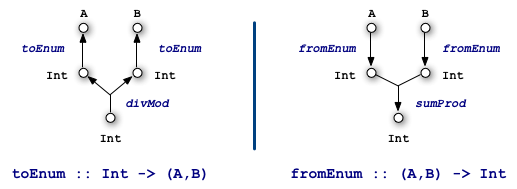
From a linguistic perspective, the primary connection between numerals and numbers is the semantic function which associates a number (a meaning) with a given numeral (or representation). Unlike with most languages, however, the syntax and semantics here are so simple that it is possible to invert the process almost exactly, with no significant loss of information.
(Why "almost"? Because we can't re-introduce arbitrary leading zeros which might have been in the original numeral, since we have no way to know how many there were. By contrast, consider the meaning of arithmetic expressions as numbers: we cannot map backward from a number to the expression which represented it, except in the trivial manner of producing a numeral, a degenerate form of expression at best. With numerals, the degenerate case of leading zeros is the exception we can't produce; with arithmetic expressions, the degenerate case of atomic numerals is the only one we can produce.)
How can we produce a numeral from a number? We want to invert a process which used iteration over a basic step involving a sum-and-product construction, relative to some base b. It seems natural to look at the inverse of this basic step, in other words to seek a function f which, when given a base b and a number n, will return two values (j,k) such that
sumProd b j k == nb * j + k == n
The function we seek is Haskell's divMod, a property we exploited
in the definition of toEnum and fromEnum for compound symbols:

divMod returns a pair of numbers, whereas sumProd
was defined to take its two arguments in succession: this leads to some
minor irritations when combining the two
sumProd
and divMod, although in the second case the equation is
restricted to appropriate pairs of numbers (the second number should be
less than the base b):
uncurry (sumProd b) . (`divMod` b) == id
(`divMod` b) . uncurry (sumProd b) == id